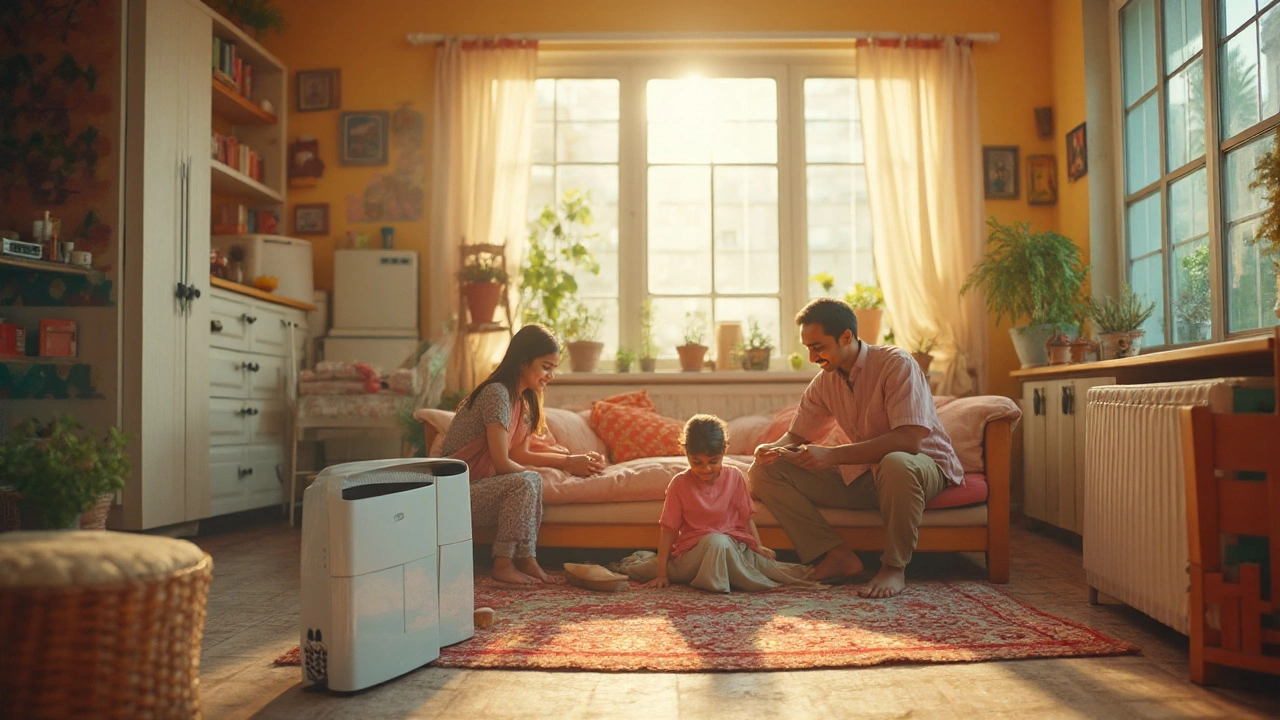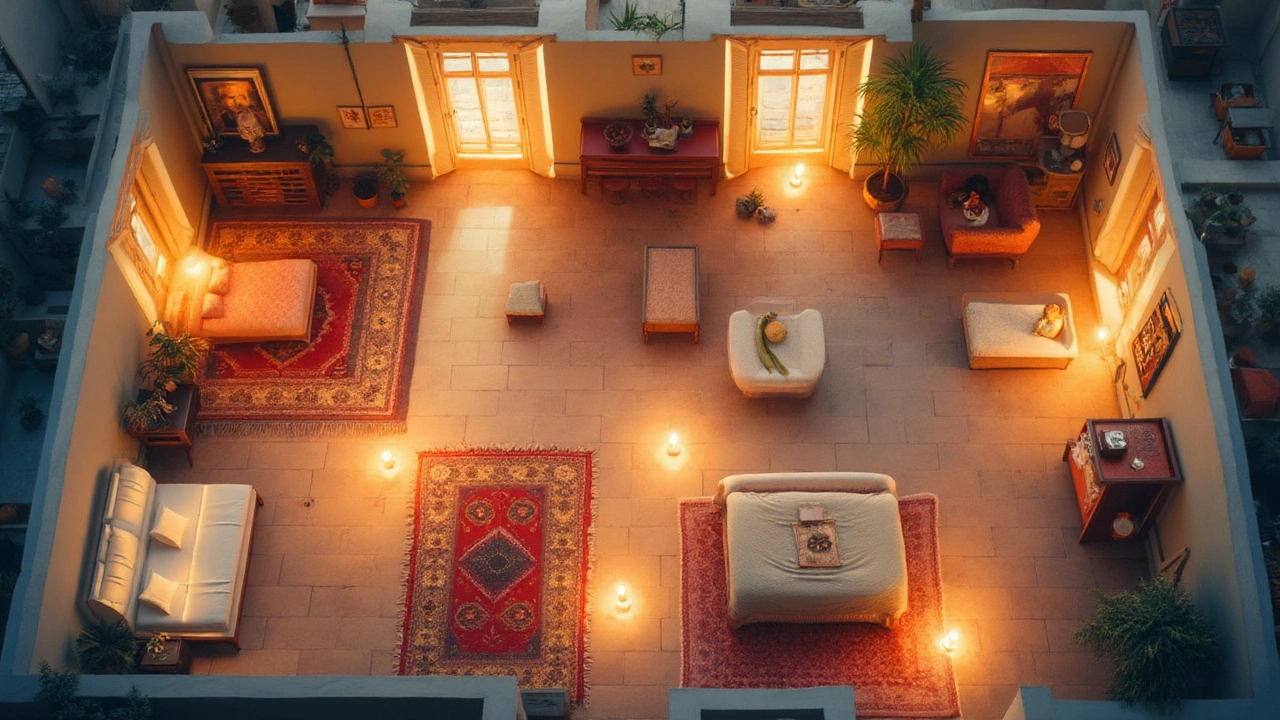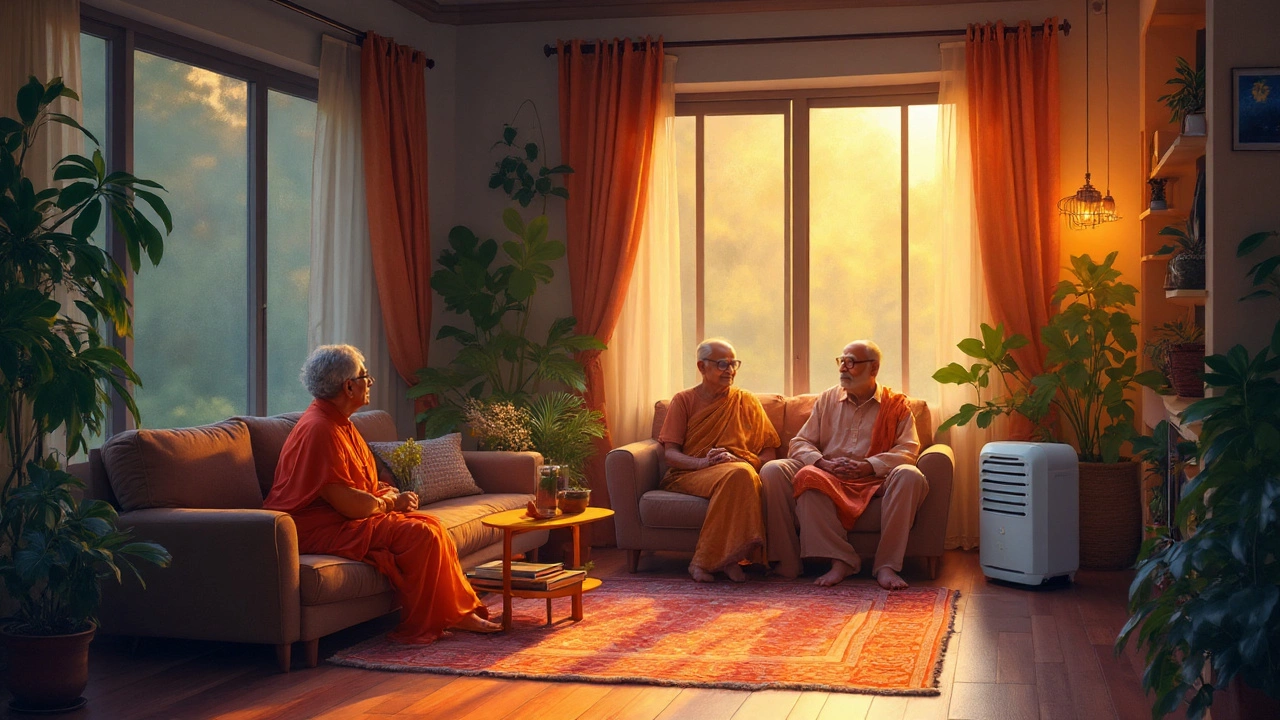
Ever wondered if you really need an air purifier in every corner of your house, or if that’s just something manufacturers want you to think? The truth is, the answer isn’t as obvious as you might hope. If you’ve got a 3 bedroom home, you probably want your family breathing better, not just stacking gadgets in every room. But here’s a twist—one purifier just isn’t enough, but going wild and plugging eight of them everywhere will just drain your wallet and leave you puzzled at your power bill. Let’s cut through the noise and dig into what actually works without all the hype. The air inside our homes is usually 2 to 5 times worse than outside, and stuff like pollen, pet dander, mold spores, and just plain dust are floating around 24/7. Since most people spend about 90% of their time indoors, hitting that sweet spot with the right number of purifiers actually matters more than you think.
The Real Science Behind Air Purifier Coverage
So, what do you actually need? Start with the size of each room, not just the number of bedrooms. Air purifiers are rated by something called CADR—Clean Air Delivery Rate. It sounds like techy jumble, but it’s simple: the higher the CADR, the more air the machine can filter per minute. If your living room is a huge hangout spot and the bedrooms are only used for sleep, don’t treat every space the same. A typical purifier with a CADR of 200 is good for about 300 square feet, but if your living area is way bigger, you’ll either need a beefier unit or two placed at opposite ends. Bedrooms usually get decent air if you’re running a single unit, but you have to watch for closed doors and tweaks in layout. Something people forget: air doesn’t dance through doorways magically. If you keep doors closed—especially for pets or just privacy—each isolated room becomes its own battlezone for air quality.
Now, here’s a fun fact. The EPA (yep, those folks) actually recommend at least one purifier per main living area where folks spend the most time. In my place, the biggest difference happened when we put units in both the living room and the master bedroom. Elena actually noticed her allergies calm down in just a few days. The sneaky thing is, allergens don’t respect boundaries. A bunch of scientific tests show that pollen, dust, and particles get kicked up with every step, so even if you have only one purifier going full send, the other rooms are still playing catch up. For a 3 bedroom house, you’re usually looking at three to four purifiers for solid coverage, especially if you want to cover spots like a hallway or home office. I did a bunch of experimenting last spring when pollen season hit—it was shocking how much better my sinuses felt in rooms with purifiers running 24/7 versus the ones we “forgot.”
Smart placement matters way more than just cranking up the fan speed. You want airflow on your side—ideally, keep purifiers away from tight corners and don’t shove them behind furniture. If the grills can’t breathe, neither will you! Also, higher-end models with automatic air sensors save electricity and adjust on the fly, so you only burn energy when needed. Want details? Check out the table below for what different CADR ratings mean in plain square footage terms.
| CADR Rating (CFM) | Room Size Coverage (sq ft) | Perfect For |
|---|---|---|
| 100-150 | Small rooms (up to 200) | Nurseries, small bedrooms |
| 151-250 | Medium rooms (201-400) | Typical bedrooms, home offices |
| 251-400 | Large rooms (401-600) | Living rooms, master bedrooms |
| 401+ | Extra large spaces (601+) | Open-plan areas, combined kitchen/living |
Aim for a air purifier that matches—even slightly exceeds—your room’s square footage for best results. Underpowered units won’t keep up, and you’ll be left chasing invisible dust bunnies.

How Many Air Purifiers Do You Really Need?
The golden rule? Match the number of purifiers to the rooms you want clean, not just the rooms you have. Here’s the setup that usually hits the mark in a 3 bedroom home:
- One purifier in each bedroom (total of three).
- One in the main living area—especially if it’s open plan.
- An optional bonus: a small unit in high-traffic spots like a hallway if you want the full “bubble” effect. Not necessary, but nice for allergy season.
Why not just one huge unit? The problem is, air flow gets blocked by walls, corners, and closed doors. You could buy a unit rated for 1500 square feet, but it won’t magically filter the air behind your kid’s closed door, or the guest room tucked away at the end of the hall. I used to think one monster purifier was enough, until our daughter caught a cold and we realized her room air still felt heavy after running the big guy in the hallway. Lesson learnt!
Let’s say you’re not home much during the day. Maybe you can get away with a single purifier in your main space, and then move it to the bedroom at night. But that’s only if you want just the basics. If you have allergies, asthma, little kids, or pets shedding constantly, every bedroom and the living space should get its own purifier. Dust, dander, and those microscopic nasties don’t care if the room looks clean—they slip in everywhere, especially if you live somewhere dry, have wall-to-wall carpets, or bask in open windows during spring.
A lot of folks get tripped up by thinking they’ll just buy a fancy HVAC filter and let the central air do all the work. It helps, no doubt, but only when the AC is blowing, and most home HVAC units can’t quite catch all the fine particles since they use MERV 8-12 filters, which miss a ton of stuff compared to HEPA units. Here’s a pro tip: combine your basic air purifier coverage with HVAC system upgrades if you want to double down, but don’t rely on HVAC alone.
If budget is a concern, prioritize the bedrooms where you sleep first—especially if anyone has a history of asthma or allergies. Then add a unit to the living/dining area when you can. If you’re splitting time between home office work and family time, a two-unit rotation works in a pinch—keep one where you’re spending active hours, move the second to bedrooms at night. But if you’re after simplicity and lowest fuss, just aim for one purifier per essential room used daily.
Shifting gears, let me bust a myth: more purifiers does not always mean more cleanliness. Once a purifier runs in a room that matches its rated size, boosting with a second unit rarely helps unless the first is underpowered or poorly placed. Air just gets filtered through both, back and forth, not twice as fast. Placement and filtration rate really matter! If you live in a city with wildfire smog or next to a dusty road, you might feel you need a couple extra. That’s fair. But in the average suburban setup, three to four purifiers cover a 3 bedroom house just fine.

How to Get the Most Out of Your Air Purifiers
So, you’ve stacked up the right number of purifiers—but how do you wring the best air quality from them? Here’s what worked in my own house after experimenting (and making some classic mistakes):
- Change filters regularly. No, seriously. A clogged HEPA filter becomes useless, and your fancy machine will just blow dirty air around. Most need changing every 6-12 months, depending on dust levels, pets, and how much you run them. Mark your calendar or set a reminder, because it’s easy to forget until you notice stale air again.
- Run purifiers on high for the first hour after coming home or after heavy cleaning sessions. After that, you can switch them to low or auto mode. This "power hour" clears out whatever got kicked up while you were out, or dust from vacuuming and other chores.
- Don’t shove the purifier in a corner or behind a couch. It needs clear airflow all around—ideally, at least a foot from any wall. Placement in the center of a room works wonders, but if that’s impractical, go for the space with the most foot traffic. Dust likes to settle where you’re least likely to notice: right in the middle of the rug, not just under the bed.
- If allergies are hitting hard or smog rolls in, crank the purifiers to maximum in affected rooms and keep windows closed. Even just an hour or two on max helps. During normal days, auto-mode or low speed is usually enough.
- If you love sleeping with windows open, remember purifiers work hardest when you keep the outdoor air at bay. If pollen count is high, shut your windows at night, switch the unit on, and let it do its thing while you snooze.
Here’s something handy—many of the newest air purifiers come with air quality sensors and will show color-coded indicators if air quality drops, like during cooking or when pets go on a shed-spree. Take advantage of these features and actually watch the readings. Our unit in the kitchen now glows red every time I try to fry bacon. (Yes, I probably should cook less bacon, but where’s the fun in that?)
Did you know, according to consumer reports tested in 2024, HEPA-filtered air purifiers can lower indoor PM2.5 (the fine particles linked to asthma and heart issues) by up to 80% when properly sized for a room? That’s not marketing—that’s real science. One study out of Johns Hopkins found that using multiple purifiers in a home significantly cut allergy and asthma symptoms, especially for households with pets. If your nose, skin, or eyes feel itchy, or you wake up groggy, that’s your body hinting that something invisible is off. Purifiers can genuinely help.
If you’re juggling family needs, give each purifier its own "job"—living room units for dust/kitchen odors, bedroom units for nighttime breathing, and portable ones for moving wherever the action is. You don’t have to go crazy or overthink it. Just keep units matched to room size, filters fresh, doors open during the day if possible for better circulation, and tweak settings based on what you’re actually doing. You’ll know you hit the sweet spot when the air feels crisp, less dusty, and, honestly, when everyone sleeps better—or at least stops sneezing before breakfast.